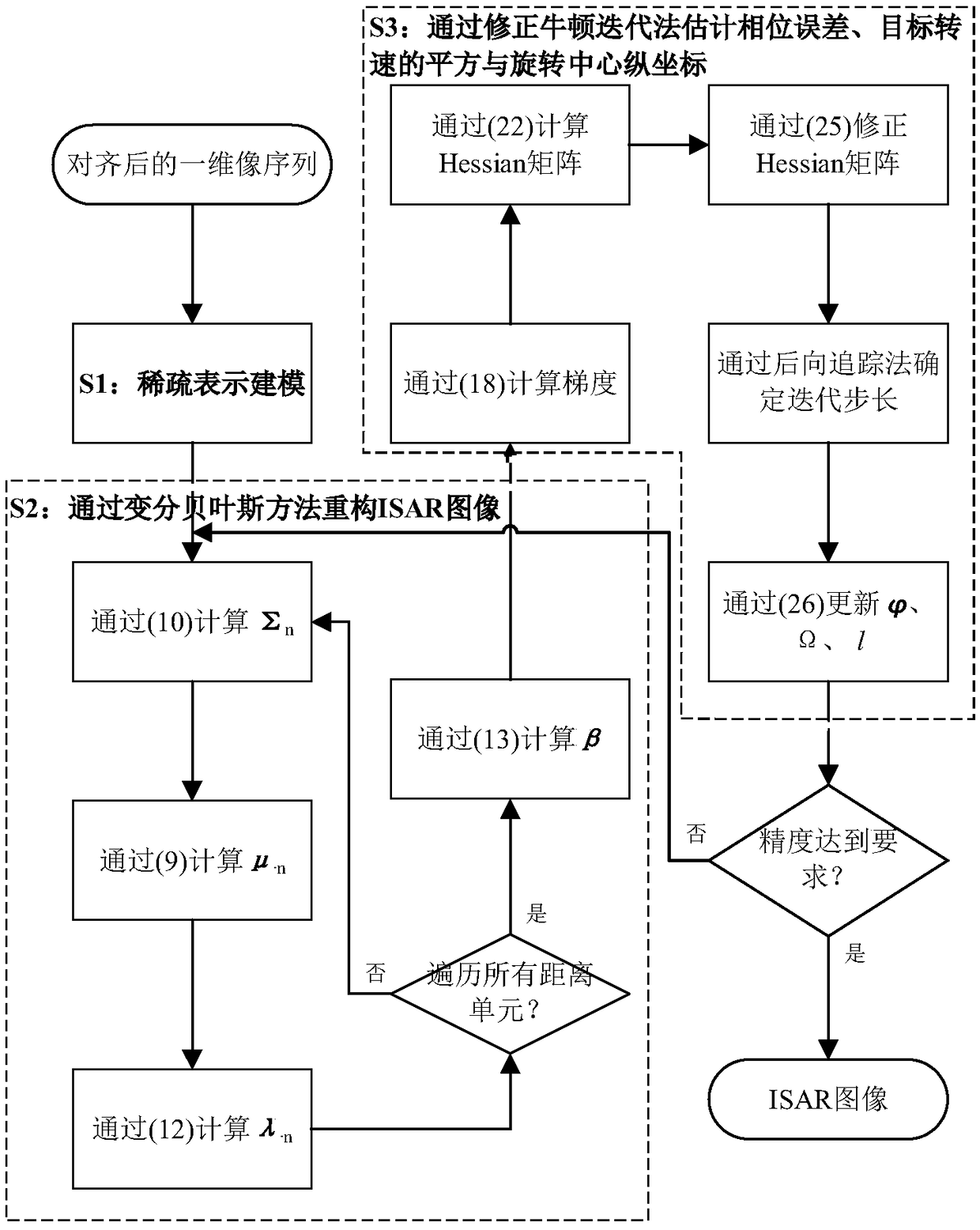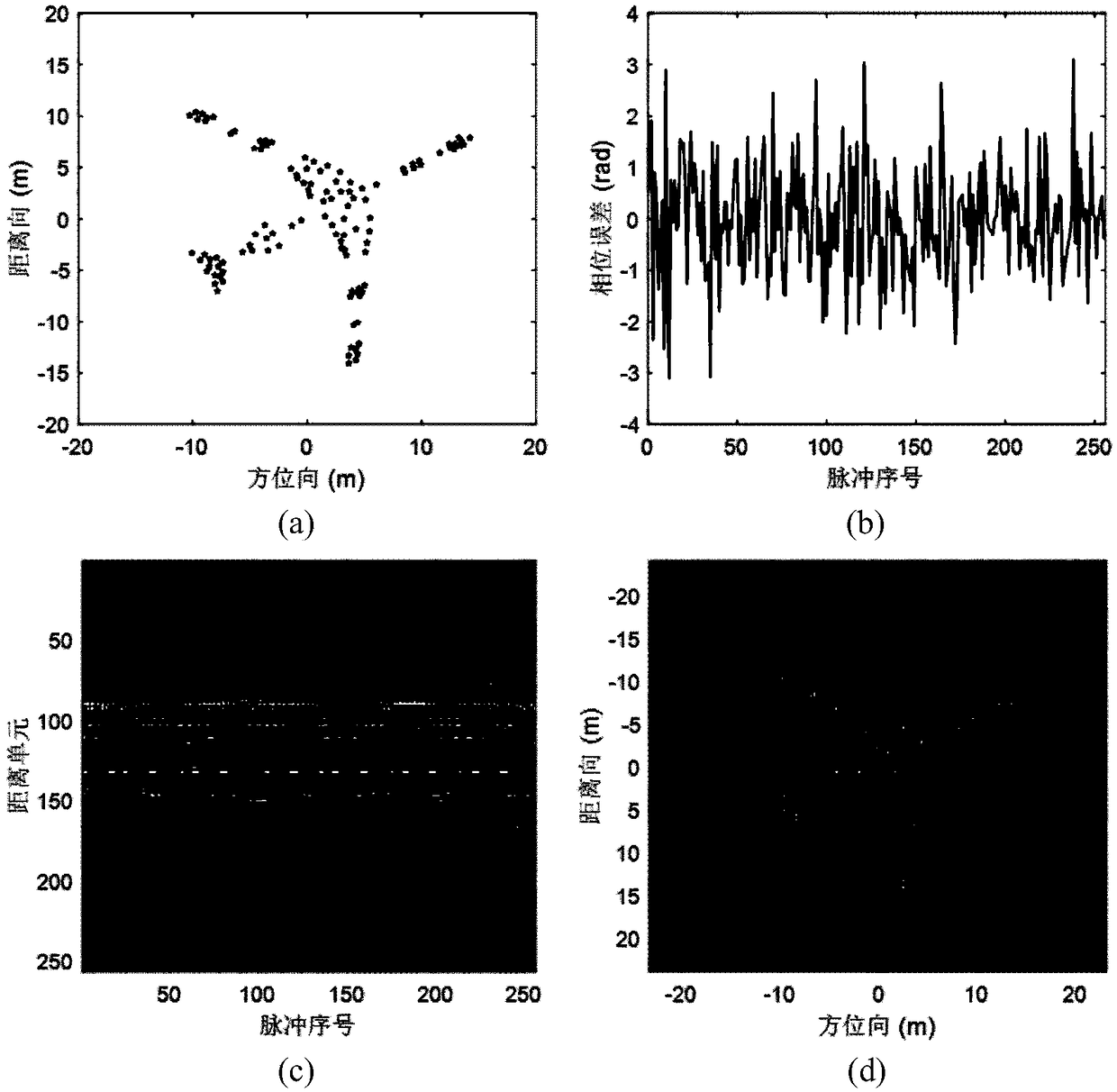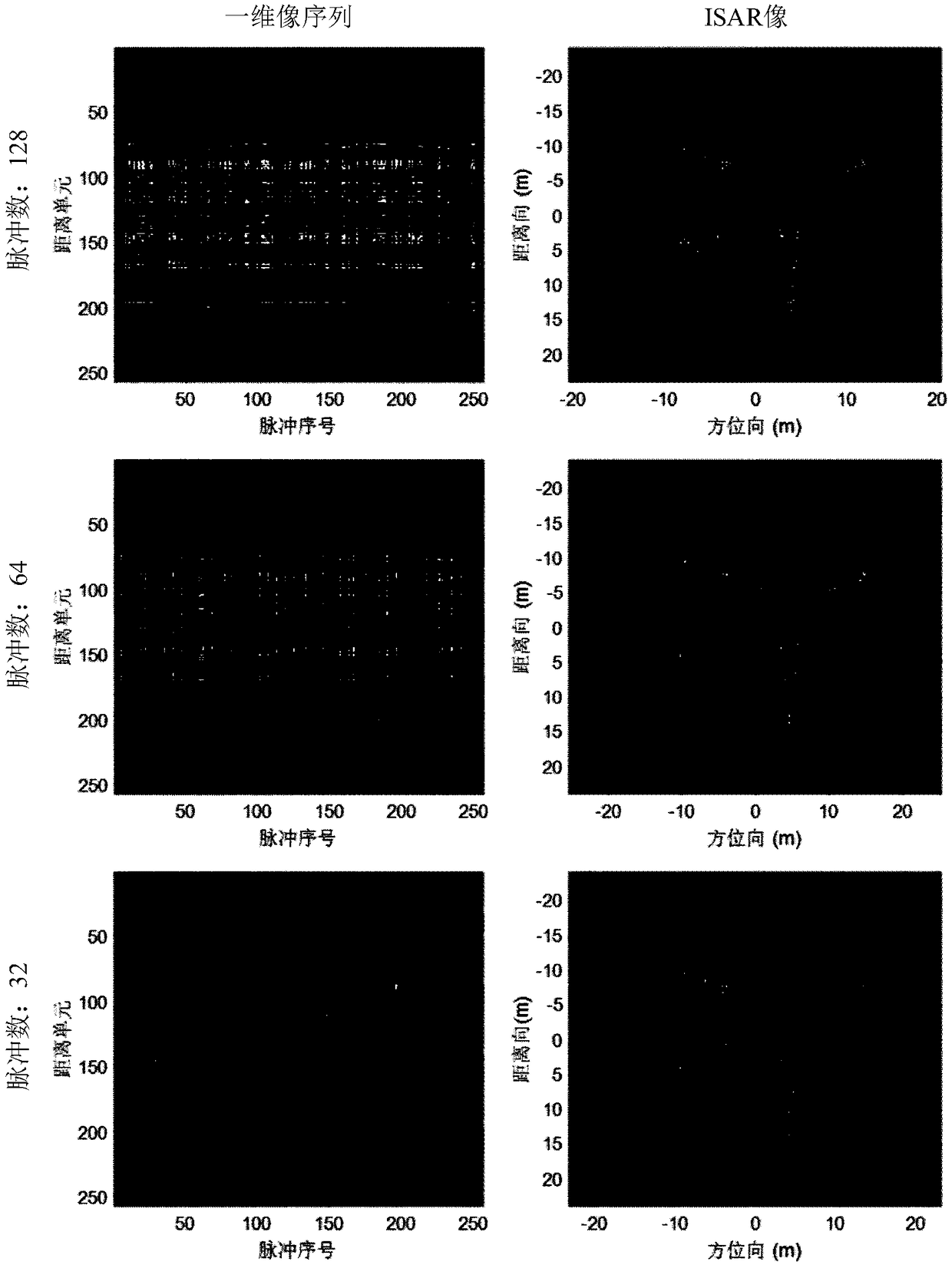Sparse aperture ISAR self-focusing and lateral scaling method based on Bayesian learning
A technology of Bayesian learning and sparse aperture, which is applied in the direction of radio wave reflection/reradiation, utilization of reradiation, measurement devices, etc., can solve the problem of ISAR self-focusing and lateral calibration performance degradation, which is difficult to meet the actual needs of engineering, ISAR Image quality degradation and other issues
- Summary
- Abstract
- Description
- Claims
- Application Information
AI Technical Summary
Problems solved by technology
Method used
Image
Examples
Embodiment Construction
[0087] The present invention will be further described below in conjunction with accompanying drawing:
[0088] figure 1 It is the general processing flow of the present invention.
[0089] A sparse-aperture ISAR self-focusing and lateral calibration method based on Bayesian learning described in the present invention comprises the following three steps:
[0090] S1: Sparse representation modeling of the one-dimensional image sequence after target envelope alignment;
[0091] S2: Reconstruct the ISAR image through the variational Bayesian method;
[0092] S3: Estimate the phase error, the square of the target speed and the ordinate of the rotation center by the modified Newton iterative method.
[0093] Firstly, experiments are carried out by using simulation data to verify the effectiveness of the method of the present invention. build as figure 2 (a) shows the simulated aircraft scattering point model, which is composed of 113 scattering points, and the rotational spee...
PUM
 Login to View More
Login to View More Abstract
Description
Claims
Application Information
 Login to View More
Login to View More - R&D
- Intellectual Property
- Life Sciences
- Materials
- Tech Scout
- Unparalleled Data Quality
- Higher Quality Content
- 60% Fewer Hallucinations
Browse by: Latest US Patents, China's latest patents, Technical Efficacy Thesaurus, Application Domain, Technology Topic, Popular Technical Reports.
© 2025 PatSnap. All rights reserved.Legal|Privacy policy|Modern Slavery Act Transparency Statement|Sitemap|About US| Contact US: help@patsnap.com



